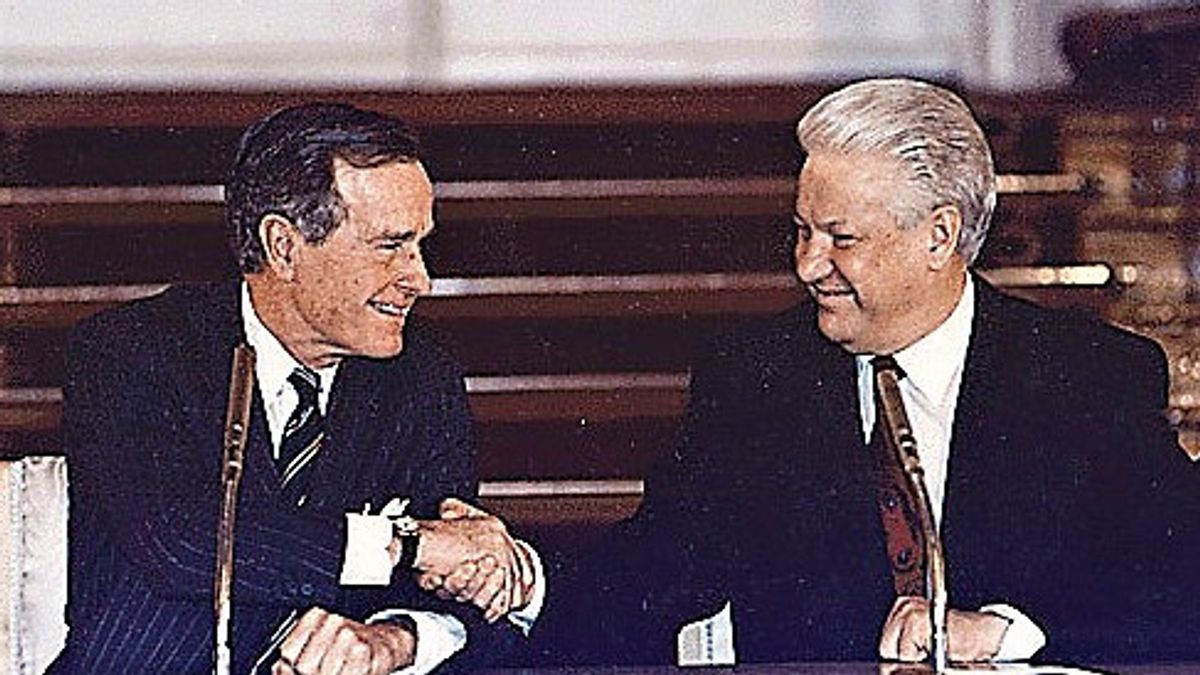JAKARTA - Today, January 3, 28 years ago, or in 1993, the United States and the Russian Federation agreed to reduce the number of nuclear weapons they have between 3,000 and 3,500. US President George Bush and Russian Leader Boris Yeltsin signed the "Start II" Strategic Arms Reduction Agreement in Moscow.
As reported by the BBC, at that time each party had about 10,000 warheads. And Start II would be the greatest nuclear reduction moment ever agreed. Additionally, sea-based weapons will be cut to 1,750 each and all land-based warhead missiles will be eliminated.
The agreement, according to Bush, promises parents and children a future free from fear. Meanwhile, Yeltsin called it: hope agreement.
Weakens RussiaThe agreement promised the elimination of three-quarters of the nuclear weapons held by the two countries by the early 1990s. Yeltsin believes Start II shows that Russia has abandoned the arms race.
"I think it is important for Russian power as a great power to be determined not by the number of missiles but by the standard of living of its citizens, cultural development, education and national traditions," he said.
Meanwhile the US Congress must agree on Start II, while the former Soviet Union countries, such as Ukraine and Kazakhstan, still hold nuclear weapons. On the Russian side, however, Yeltsin has been criticized for making too many concessions to the US, releasing all Russian land-based SS-18 missiles. Even though it is Russia's core weapon.
In contrast, the US appears to be maintaining a tactical advantage by agreeing to halve its submarine-based warheads, which are the heart of its nuclear arsenal. Start II builds on previous treaties that helped end the Cold War.
The English, Chinese, Japanese, Arabic, and French versions are automatically generated by the AI. So there may still be inaccuracies in translating, please always see Indonesian as our main language. (system supported by DigitalSiber.id)








